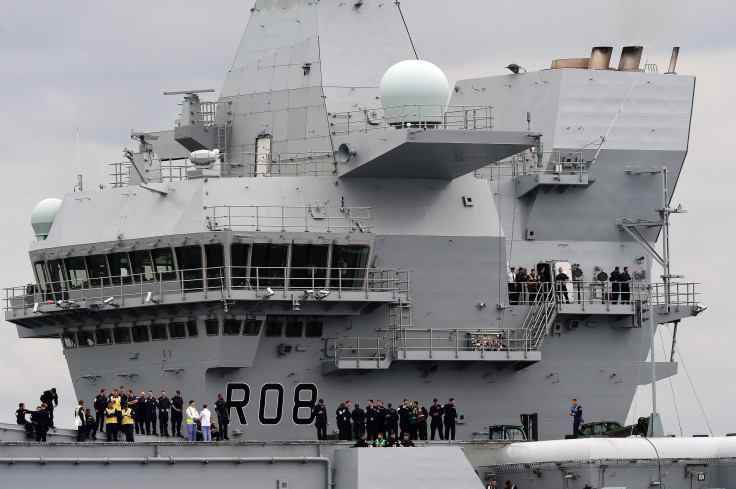HMS Queen Elizabeth, UK’s Largest Warship, Runs On Windows XP, Vulnerable To Hacking

It was recently revealed that HMS Queen Elizabeth, Britain’s largest warship, which left Rosyth Dockyard, Scotland, heading to the North Sea for its first ever sea trials, ran on the outdated operating system, Microsoft Windows XP.
Before the HMS Queen Elizabeth took off for drills in the high sea, some journalists were given an exclusive tour of the grand vessel, which is when they spotted some of the computers in ship’s the control room still using Microsoft Windows XP, the Telegraph reported.
Microsoft Windows XP was introduced in 2001 and is no longer supported by Microsoft, which means it does not receive updates to protect users from latest cyber hacks.
"If XP is for operational use, it is extremely risky," Alan Woodward, professor of computing at the University of Surrey said, according to the Telegraph report.
Read: UK Parliament Hit By Cyberattack Leaving Members Without Email Access
Peter Tsai, IT analyst at Spiceworks, a network for IT professionals said that despite the knowledge that Windows XP is outdated and poses security concerns, there are companies who still rely on it. “A lot of smaller companies subscribe to the theory, probably wrongly now, that if it’s not broken then don’t fix it,” Tsai told Wired. “Especially companies that aren’t prioritizing IT.”
Mark Deller, commander air on the HMS Queen Elizabeth, defended the use of the operating system on the ship, refusing to admit that it can be hacked. "The ship is well designed and there has been a very, very stringent procurement train that has ensured we are less susceptible to cyber than most," Deller told the Guardian.
Windows XP is the operating system that was incapable of protecting organizations like the National Health System (NHS) of the United Kingdom among others from a massive WannaCry ransomware attack in May. The attack, which was linked to NSA exploits leaked by the infamous Shadow Brokers hacker group, saw the cyber terror group take control of over 300,000 computers in 150 countries.
However, Deller has made it clear that the cyberattack experienced by NHS is something that HMS Queen Elizabeth does not have to worry about.
“We are a very sanitized procurement train,” Deller stated. “I would say, compared to the NHS buying computers off the shelf, we are probably better than that. If you think more NASA and less NHS you are probably in the right place.”
Read: Cyberattacks: FBI Says Work Email Scams, Payment Fraud Top Online Crimes In 2016
The Ministry of Defense has argued that the nuclear submarine system does not need an updated operating system simply because when the warship sails into the sea, it is isolated and hence, does not stand a great chance of getting hacked. Hence, the carrier has only been armed with a team of cyber specialists to defend it from cyber attacks, Lieutenant Commander Nick Leeson stated.

HMS Queen Elizabeth, worth £3.5 billion ($4.5 billion), is the most powerful vessel ever built for the Royal Navy. Ten thousand people worked on construction of the ship. It was built in sections at yards around the U.K. and transported to Rosyth, where it was assembled.
All the safety protocols have been followed, including making all the 650 doors and hatches airtight to ensure that the warship is both flood and fire proof. In this regard, Ian Booth, managing director of the Aircraft Carrier Alliance that is delivering the ships, referred to the fire in London’s Grenfell Tower on June 13, stating that “you don’t take chances with any incident on the ship, whether it be flooding or fire.”
Rear Admiral Keith Blount, head of the Navy’s carrier program, said: “This ship has been built in a very unique way: assembled in Rosyth but built around the UK in six different yards. This is the moment where that British shipbuilding expertise meets the professionalism of the Royal Navy to give us a ship to be proud of.”
The Royal Navy is in fact so confident of the ship’s capabilities, that it announced that HMS Queen Elizabeth will not be backed up by a frigate or destroyer.
“We will go where it’s best to go and not where it’s best for a Soviet nuclear to go, so the reality is we can probably look after ourselves as long as our escort is in the right place at the right time. You don’t have to hang around and endure it, you can move away and go somewhere else,” said Deller.
© Copyright IBTimes 2024. All rights reserved.












